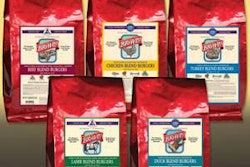A series of recent recalls in the US for high aflatoxin levels in petfood is increasing the pressure to tighten government food safety rules in proposals that are currently under review by the Food and Drug Administration, according to a report from Reuters.
The act, signed into law this year, focuses on preventing petfood contamination, starting with petfood ingredients, rather than just responding to contamination. Grains, ingredients in many petfoods, are degraded by crop diseases, including the Aspergillus fungus on corn. In dry, hot growing seasons like 2011, toxins like aflatoxin are produced in high amounts, causing a series of recent petfood recalls by Cargill, Iams and Advanced Animal Nutrition.
"What's happening with the Food Safety Modernization Act is we're seeing an increase in incidents of reporting because there is more surveillance. With more surveillance we are going to get more positives," said Greg Aldrich, president of feed consultancy, Pet Food and Ingredient Technology. "Livestock feed, petfood and human food companies have already begun to implement everything that is going to be part of the law."
"We stepped up our testing of aflatoxin especially looking at the dry conditions of the summer," said Mike Strain, commissioner of agriculture and forestry for Louisiana, USA. "When you look at food safety we continue to test. It shows why we need that traceability system so we can identify the product then go through the entire system and pull that product back."
Crop specialists say the key to keeping aflatoxin out of the human and animal food chain is to test corn right from the field in high-risk years. However, tests are expensive at US$10 to US$15 per sample, and can be timely and sometimes produce a false negative result.
"Shortcuts get taken," said Charles Hurburgh, a grain quality specialist for Iowa State University. "With the Food Safety Modernization Act, if you have reason to believe you have an adulterated food, more than 20 parts is an adulterated food – you put it in the system, you're in big trouble."















